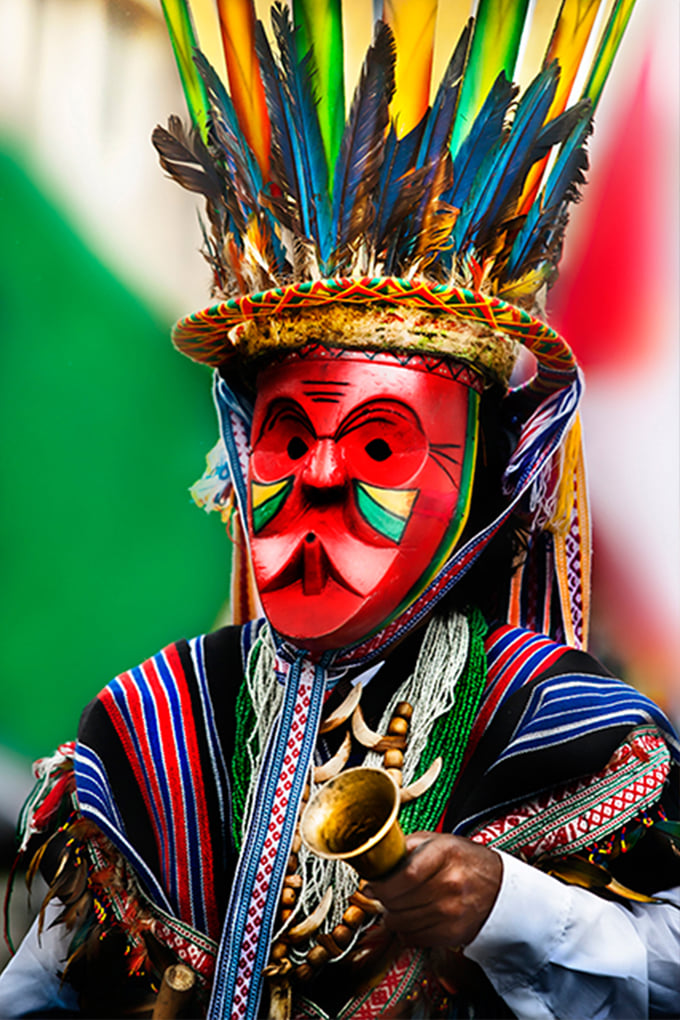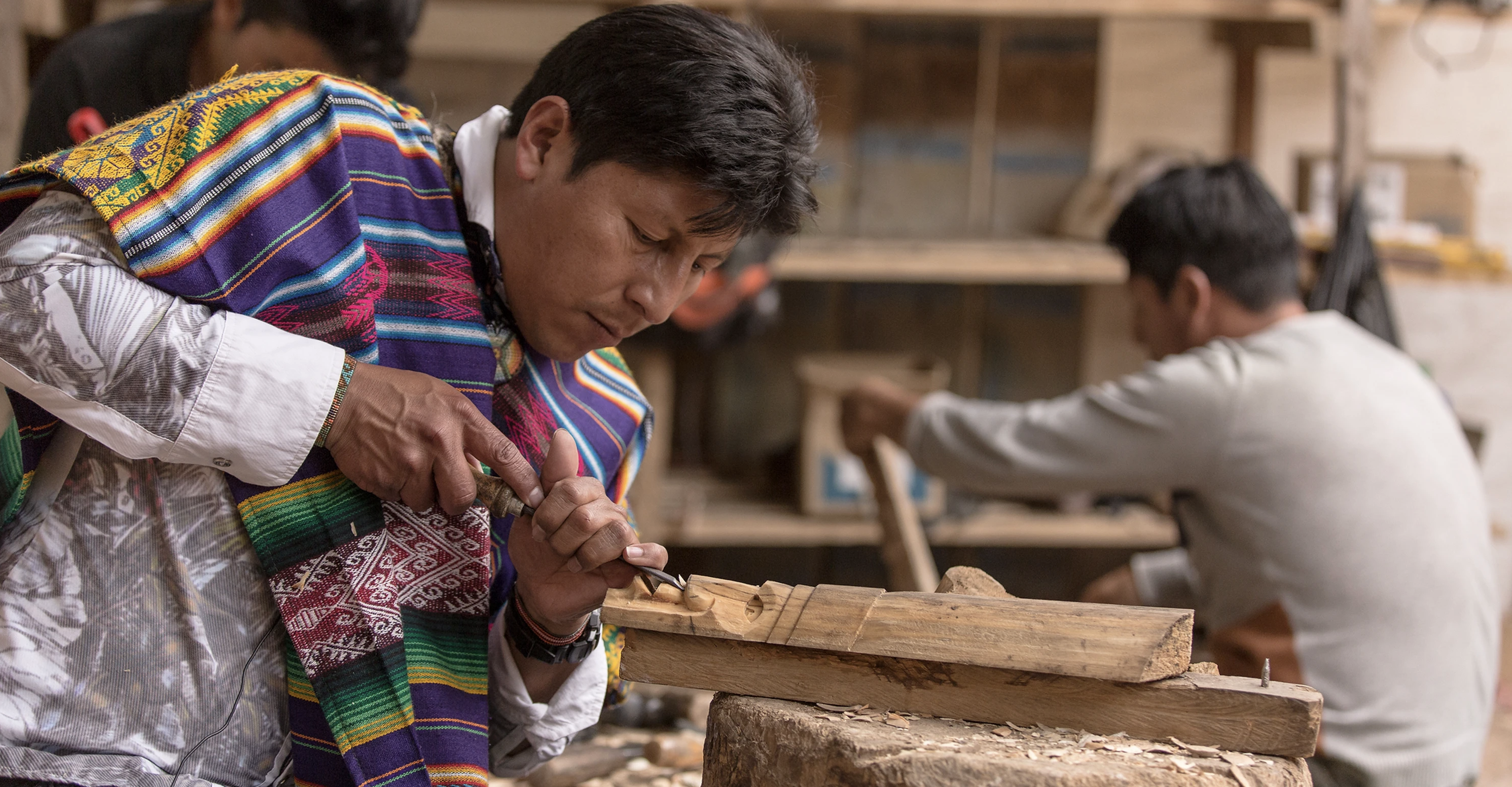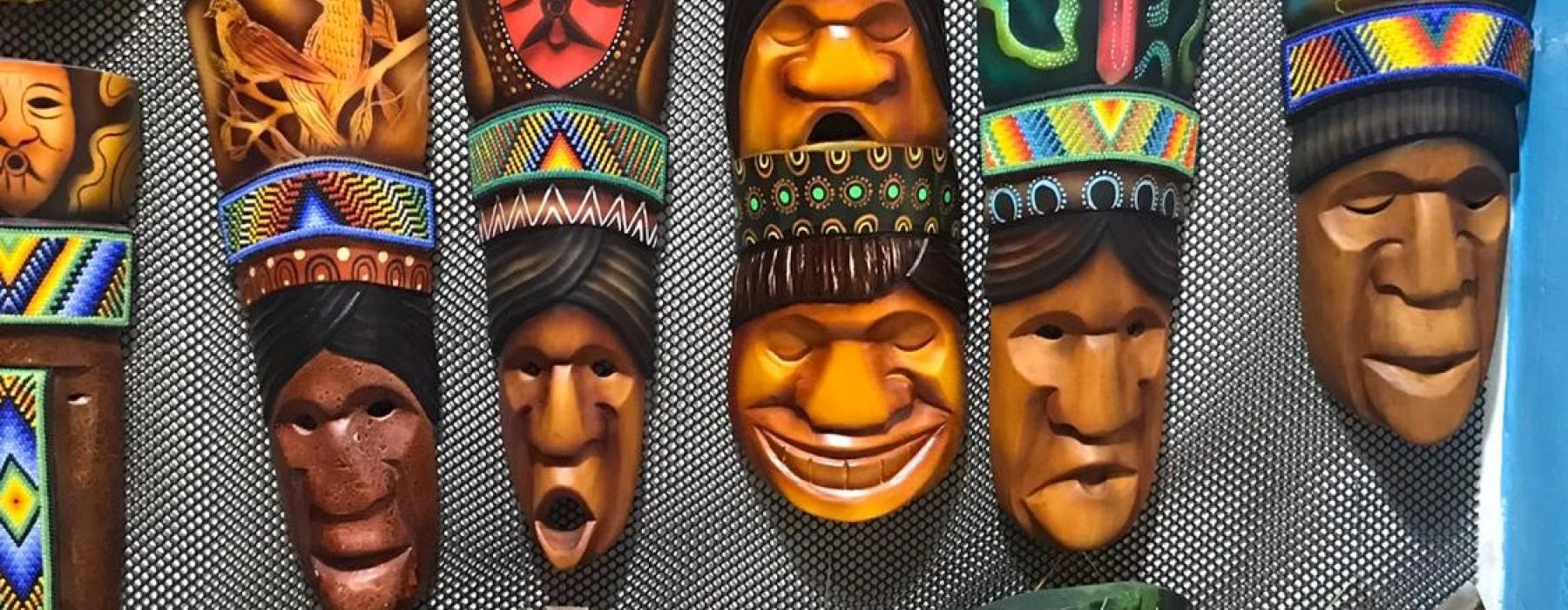Description
El Valle del Sibundoy, situado en el sureste de Colombia está habitado por las comunidades indígenas Kamsá e Inga.Los Kamsá, localizados en Sibundoy, se dedican al oficio de la tejeduría, la talla en madera, la agricultura y la medicina ancestral, que tiene por práctica el uso del yagé. Los oficios han sido heredados de sus padres y abuelos y en ellos se reflejan la cultura y los saberes ancestrales.
En la tejeduría se usa el telar de cintura, un tipo de telar tradicional, que consta de dos barras horizontales, una se ata a la cintura del tejedor y la otra a un punto fijo. Los hilos de la urdimbre se estiran entre las dos barras y con una lanzadera se pasan los hilos de la trama que se presionan con un peine para compactar el tejido. Una vez terminado el tejido, se remata por medio de trenzado, anudado o cosido. Los chumbes o fajas forman parte de la indumentaria tradicional.
Se elaboran en lana de oveja y algodón en vivos colores y variados diseños, utilizando códigos de escritura simbólicos que forman parte de la tradición y cosmovisión de la comunidad.
Rosario Agreda de Chicunque es líder en su comunidad y ha promovido la innovación y la organización de grupos productivos para beneficiar a sus miembros y fomentar la comercialización de sus productos.
Máscaras de Madera
Uno de los oficios que comparten las comunidades Inga y Kamsá y que forman parte de su riqueza cultural y artística es el de la talla en madera, especialmente la talla de máscaras.
Las máscaras, cuentan historias y son una forma de representar su descontento frente a los invasores extranjeros, con una gestualidad exagerada como forma de protesta o resistencia pasiva ante personas o situaciones indeseadas, y desempeñaron un papel significativo durante la Colonia.
El yagé, (Banisteropsis caapi) una planta medicinal para estos grupos étnicos, sirve de inspiración para los talladores, quienes a través de sus visiones encuentran los elementos y temas para sus obras, que reflejan su relación con el cosmos.
Son representaciones de animales como tigres, jaguares o guacamayas o de rostros que reflejan los rasgos físicos del grupo étnico, con gestos naturales o con expresiones jocosas, serias o exageradas. Utilizan maderas como cedro, urapán, o sauce, ayudados con gurbias y punzones en un espacio de la vivienda, o al aire libre.
Las máscaras conservan la técnica ancestral, Angel Marino Jacanamijoy, es un vivo ejemplo de un maestro que ama el oficio y junto a su esposa y sus hijos trabaja en su taller con la misión de enseñar la técnica para perpetuar los saberes tradicionales de sus ancestros.
Bibliografia
Duque, Duque C. Maestros del Arte Popular Colombiano-Suramericana. Panamericana Formas e Impresos S.A. 2010
Perdomo de Rojas, L. Fundación Bat- Exposición de Máscaras del Valle de Sibundoy-Alto Putumayo.
English
Weavings and masks, Sibundoy Valley
The Sibundoy Valley, located in southeastern Colombia, is inhabited by the Kamsá and Inga indigenous communities. The Kamsá, located in Sibundoy, are dedicated to weaving, wood carving, agriculture and ancestral medicine, the practice of which is the use of “yagé”. The trades have been inherited from their parents and grandparents and reflect their culture and ancestral knowledge.
Weaving is done using the backstrap loom, a traditional type of loom, which consists of two horizontal bars, one of which is tied to the weaver’s waist and the other to a fixed point. The warp threads are stretched between the two bars and a shuttle is used to pass the weft threads, which are pressed with a comb to compact the weave. Once the weave is finished, it is finished by plaiting, knotting or stitching. The “chumbes” or sashes are part of the traditional costume. They are made of sheep’s wool and cotton in bright colours and varied designs, using symbolic writing codes that form part of the community’s tradition and cosmovision.
Rosario Agreda de Chicunque is a leader in her community and has promoted innovation and the organisation of productive groups to benefit her members and encourage the commercialisation of their products.
Wooden Masks
One of the trades that the Inga and Kamsá communities share and that form part of their cultural and artistic richness is wood carving, especially the carving of masks.
The masks tell stories and are a way of representing their discontent with foreign invaders, with exaggerated gestures as a form of protest or passive resistance to unwanted people or situations, and played a significant role during the colonial period.
The “yagé”, (Banisteropsis caapi) a medicinal plant for these ethnic groups serves as inspiration for the carvers, who through their visions find the elements and themes for their works, which reflect their relationship with the cosmos. They are representations of animals such as tigers, jaguars or macaws or faces that reflect the physical features of the ethnic group, with natural gestures or with jocular, serious or exaggerated expressions. They use wood such as cedar, “urapan” or willow, helped with “gurbias” and punches in a space in the house, or in the open air.
The masks preserve the ancestral technique. Angel Marino Jacanamijoy is a living example of a master who loves the craft and together with his wife and children works in his workshop with the mission of teaching the technique in order to perpetuate the traditional knowledge of his ancestors.




Reviews
There are no reviews yet.